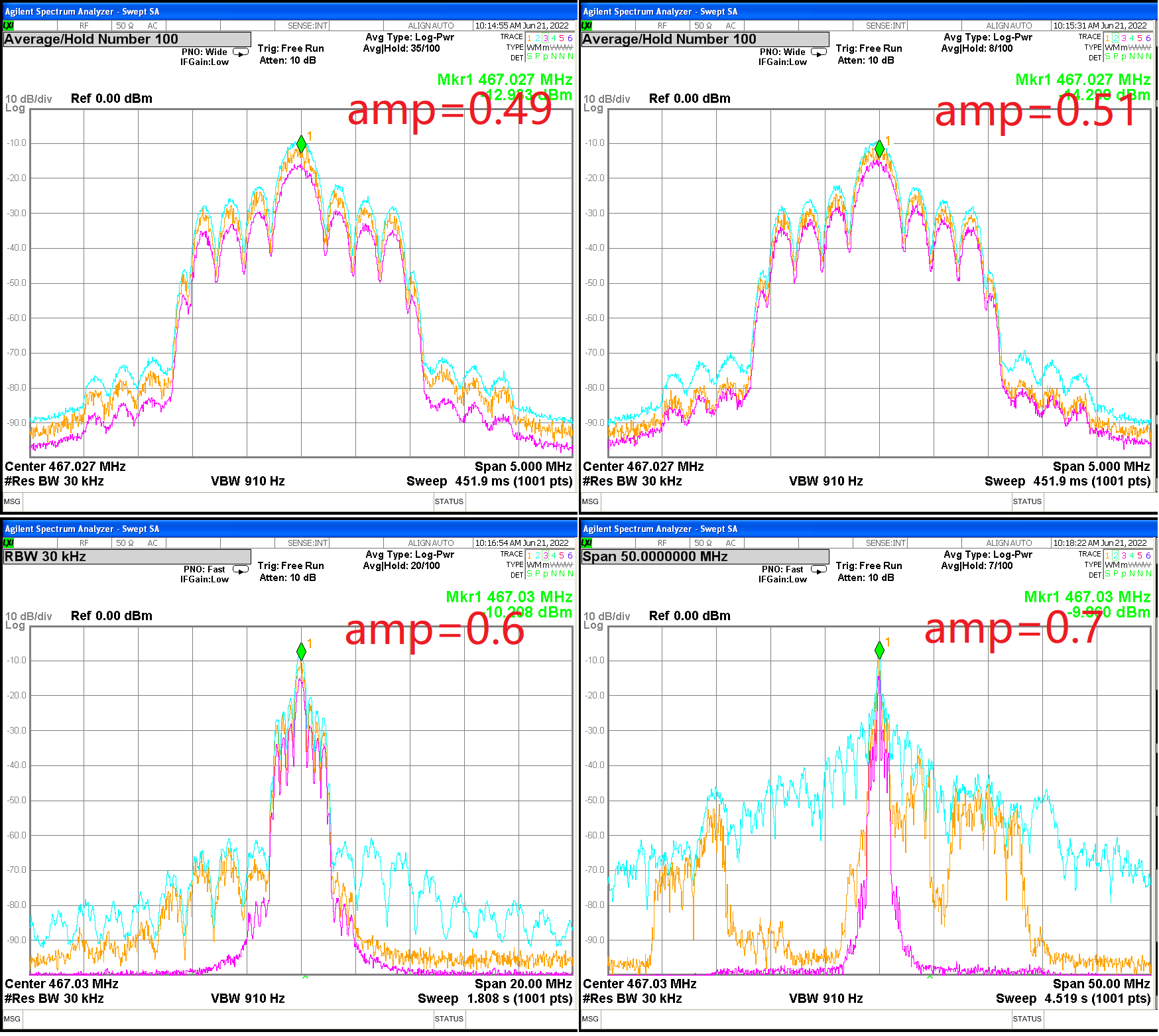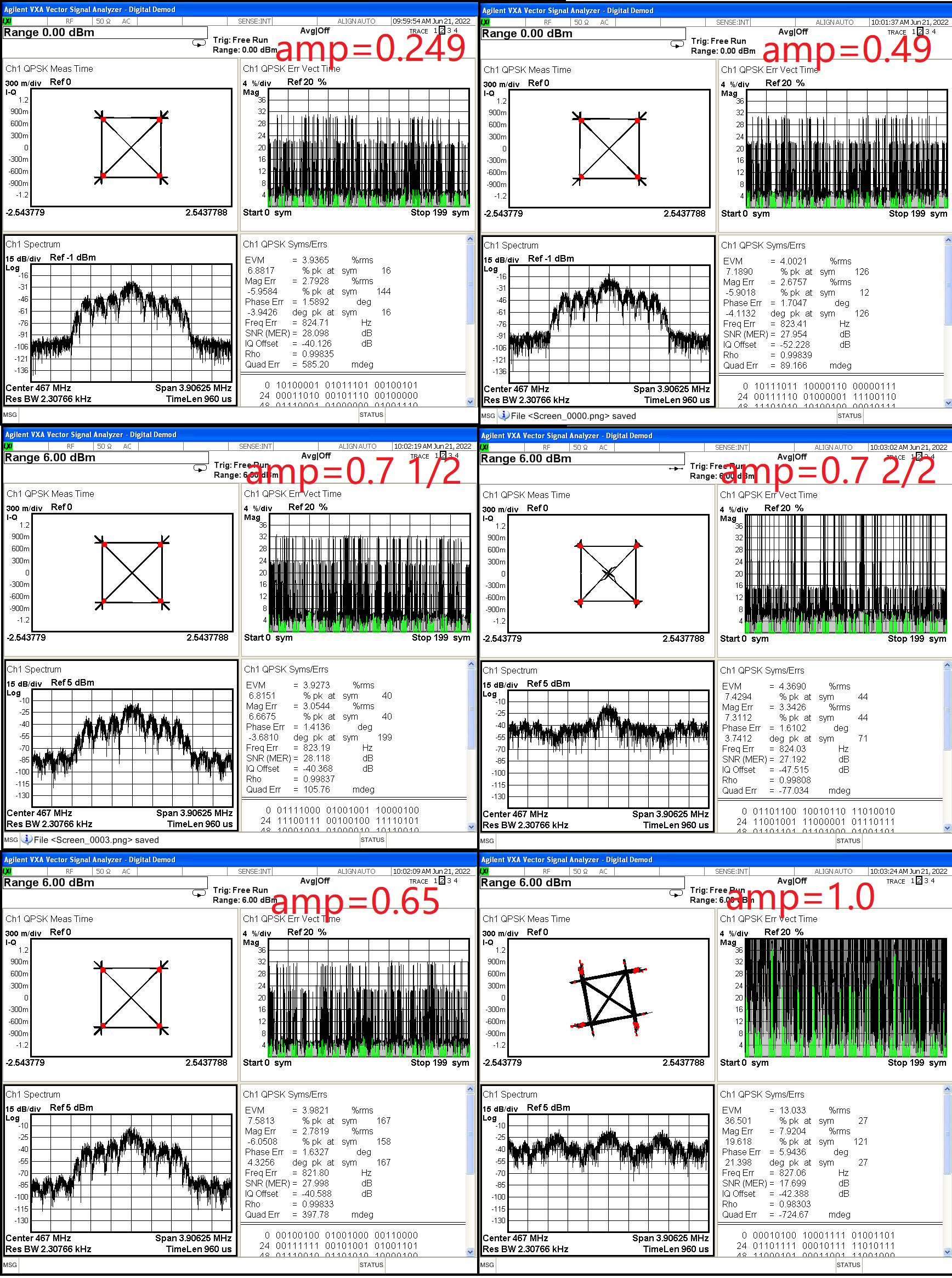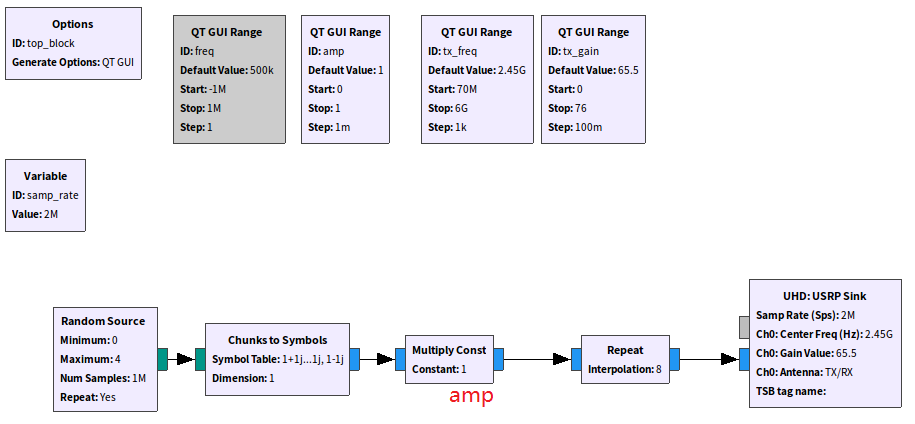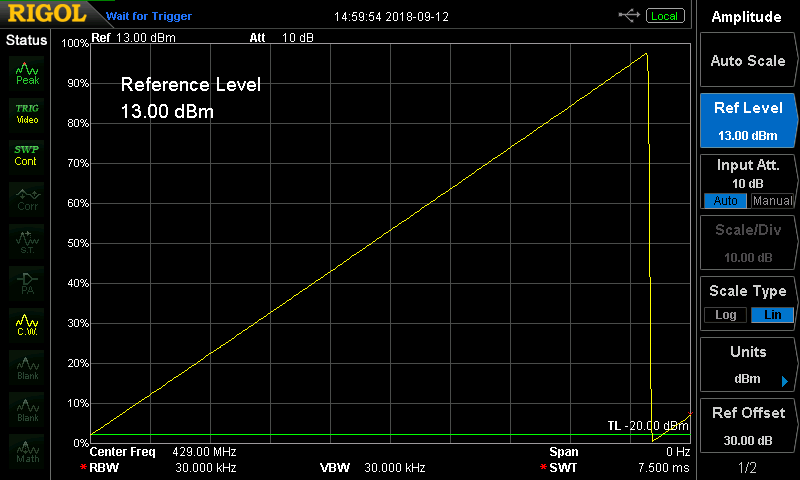That's not a simple question. Because you are testing on cw input. If an overflow happened, since I/Q is a fixed number, it's also a fixed number after overflow happened. also the DUC/DDC inside have a "ringing" step response, the overshoot can swing above input and cause an overflow.
Linearity tests must be done at modulated input with fast transient edges. Quadrature phase shift keying (QPSK) can expose the problem.
I have run some tests on USRP B210 with QPSK input. It is confirmed that overflow happens on I/Q >= 0.49



Ron Economos <w6rz@comcast.net> 于2022年6月7日周二 04:12写道:
Sorry, that's incorrect. The B210 is completely linear up to +/- 1.0. Here's a spectrum analyzer trace confirming it.

Ron
On 6/6/22 11:37, WarMonkey wrote:
DAC nonlinearity is not a problem. The problem is the datapath.
In USRP B210, the path is PC -> FPGA -> AD9361 datapath-> AD9361 DAC.
They are not saturated to {-1.0, +1.0}, >=0.5 will cause internal logic overflow and wraps around.
能书能言 <2127629883@qq.com> 于2022年6月6日周一 19:51写道:
Hi,WarMonkeyThank you for your answer, do you mean that the baseband amplitude exceeds 0.5 and the DAC nonlinearity is reached? This is different from what I understand, my knowledge is so scattered that I can't find the answer I want from your answer, can you explain my question in more detail?Best,Regardslinge93
------------------ 原始邮件 ------------------发件人: "WarMonkey" <luoshumymail@gmail.com>;发送时间: 2022年6月6日(星期一) 下午3:18收件人: "能书能言"<2127629883@qq.com>;抄送: "discuss-gnuradio"<discuss-gnuradio@gnu.org>;主题: Re: Nonlinear distortion of USRP
The problem is worse than what you think.
There's some digital processing logic from UHD data stream to USRP internal ADC. DAC is the same. These logics are implemented in FPGA using fixed point math. Wrap around happens if I/Q amplitude >=0.5, outputs are totally messed up.
After DAC it's in analog domain, they are suspicious to saturation. Normally DAC can be driven to its maximum output, but the following stages (amplifiers, mixers) have P1dB limit, higher output result to lower gain and higher intermodulation products.
能书能言 <2127629883@qq.com> 于2022年6月6日周一 11:43写道:
Hi,Recently, I am confused about the process from baseband signal to RF transmission. I know that baseband signal is sent to USRP through UHD. If the signal amplitude exceeds 1, what will happen? I looked up some mailing lists and mentioned nonlinearity. I wonder what this nonlinearity means? There are many nonlinear devices in RF, such as ADC, amplifier, etc. which is the specific one?As I understood it earlier, suppose a baseband signal sample (0.8+0.8i) becomes Udacmax* (0.8+0.8i) when it enters the USRP. Udacmax is the maximum voltage. When a signal sample is (2+2i), it becomes udacmax* (1+1i)?Amplitudes exceeding 1 are forced to be limited to 1 and multiplied by the maximum voltage?When the baseband signal has a high PAPR, it will affect the RF operation. A high amplitude will bring nonlinear distortion to the power amplifier. Is this nonlinear distortion the same as the nonlinearity brought by the amplitude exceeding 1 mentioned above? If it is the same, can I evaluate the impact of high PAPR by changing the value of the "multiply const" module (the scaling factor before the baseband signal enters the USRP sink) to make the signal enter nonlinearity?Finally, I would like to know the whole process from baseband signal to RF electromagnetic wave (on USRP). Is there any website you can recommend? I have some fragmentary knowledge of signal processing, but I can't combine them to figure out the whole process.Looking forward to your reply, thanks in advance!Sincerely,Regardslinge93